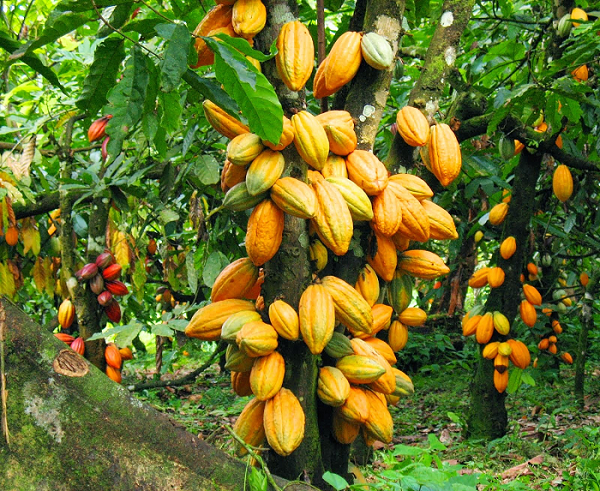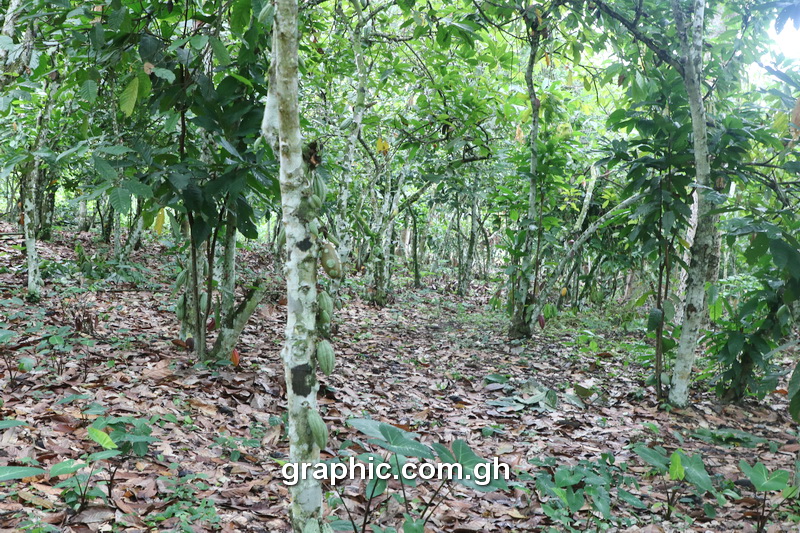
Effective pollination – Key to increasing Ghana's cocoa production
When as a child I first read about Tetteh Quarshie and how he brought cocoa beans to Ghana, and how it has for generations remained the mainstay of the Ghanaian economy, I was so inspired that I made a personal promise to own a cocoa farm one day.
As fate would have it however, I was raised up in a coastal-savannah area in the Central Region, where the environment did not support the growing of cocoa. I may have forgotten about the dream altogether, or I bottled it up unconsciously. I was under parental tutelage and my dreams were personal fantasies. I’m not sure I even raised it for discussion, seeing there would be no cocoa farm for me.
Advertisement
In spite of my lingering desire to own a cocoa farm, I have never stopped admiring people already living my dream. As a lover of cocoa, anytime I hear cocoa farmers complain about dwindling crop yields, I get disturbed.
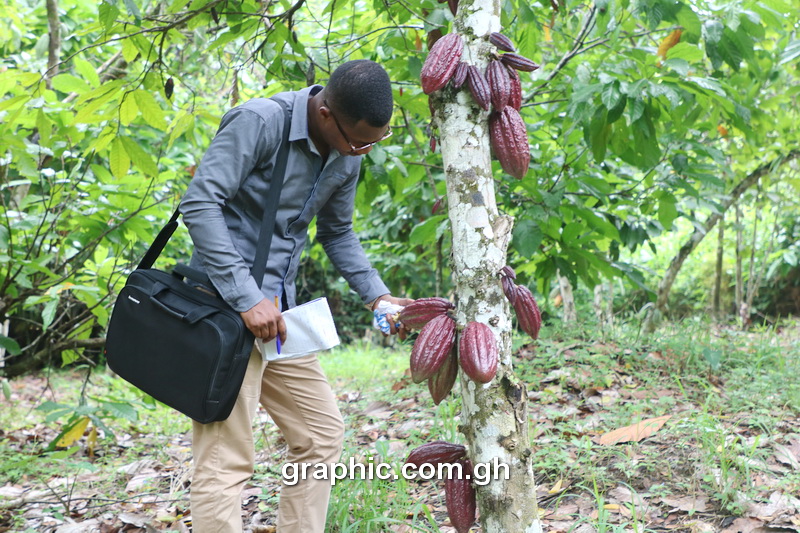
The writer admiring a cocoa pod
Over the years, one issue that many Ghanaian cocoa farmers have complained about is the incidence of low crop yields and its resultant effects on their financial fortunes.
Ghana is one of the world’s major cocoa producers. As one of Ghana’s traditional exports, the country depends heavily on cocoa for a chunk of its foreign exchange earnings as well as for the provision of employment opportunities for a significant number of its population.
According to the COCOBOD, the agency responsible for Ghana’s cocoa industry, the sector employs approximately 800,000 farm families spread over six out of the ten regions in Ghana, and contributes about US$2 billion in foreign exchange annually to the country’s Gross Domestic Product (GDP).
The highly revered cash crop is mainly cultivated by peasant farmers on small plots of lands, usually less than three hectares in the cocoa growing areas; namely Ashanti, Brong-Ahafo, Central, Eastern, Western and Volta Regions, where rainfall is 1,000 to 1,500 millimeters per year.
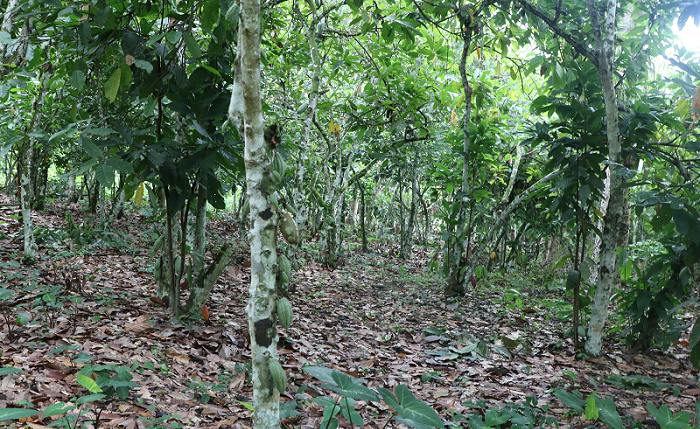
A cocoa farm at Tanyi Kwa village
Also persistent over the years, are the dwindling fortunes of Ghana’s production capacity.
Various reasons have been assigned to the declining state of the country’s cocoa production among which are low producer price, decrease in areas under cultivation, non-compliance with standard farm practices, incidence of pests and diseases, and low yields per hectare.
The low yields per hectare is of great concern to many cocoa farmers as well as the Ghanaian government. The country's cocoa production declined to its lowest point in the year 1983, when Ghana suffered its first major famine. Although production has since improved, our production has been undulating.
Information sourced from the Food and Agriculture Organization (FAO) puts Ghana as the third leading producer of cocoa in the world after Cote d’Ivoire and Indonesia respectively.
Cocoa yields
According to COCOBOD, cocoa production in the country dropped from 900,000 metric tonnes in 2014 to 740,000 metric tonnes in 2015.
Currently, farmers in the country on the average produce 0.45 tonnes per hectare, whereas, in other places such as Malaysia, Indonesia, and Ecuador, their counterparts produce two tonnes or more per hectare.
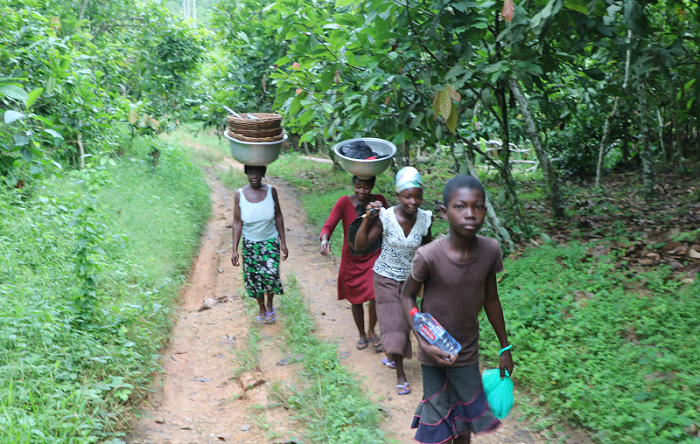
Some cocoa farmers on their way to farm at Tanyi Kwa
To help prevent the decline and boost Ghana’s cocoa production, the government initiated several programmes including free mass cocoa spraying and the distribution of free and subsidized fertilizers to the farmers.
Based on these interventions, the government even projected to increase cocoa production.
While presenting the mid-year Budget Review and Economic Planning statement to Parliament on Monday, July 31, 2017, Finance Minister, Mr. Ken Ofori-Atta, said it was the objective of government to reverse the “declining trend and to increase production to more than one million tonnes per annum within the next four years.”
Pollination
One critical area that industry watchers appear to have overlooked over the years, very essential though to increasing cocoa production in the country, is the issue of pollination and pollinators.
Pollination, according to the sciences, is the transfer of pollen from a male part of a plant to a female part of a plant, enabling later fertilisation and the production of seeds, most often by an animal or by wind and other natural agents, including the plants themselves.
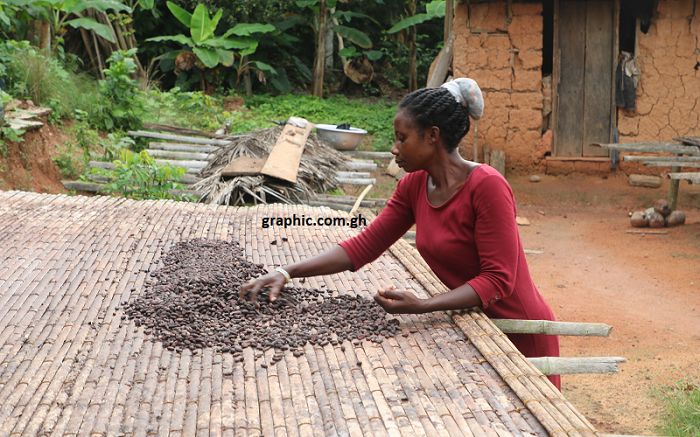
Evelyn Esilfie drying her cocoa beans
Pollination by hand (also known as artificial pollination) is used to supplement natural pollination in areas where natural pollination is either irregular or deficient.
Achieving maximum pollination is critical for optimum yield.
Since time immemorial, many Ghanaian cocoa farmers have relied on natural pollination for their cocoa yields, which among other things, has contributed to the decrease in low yields per hectare.
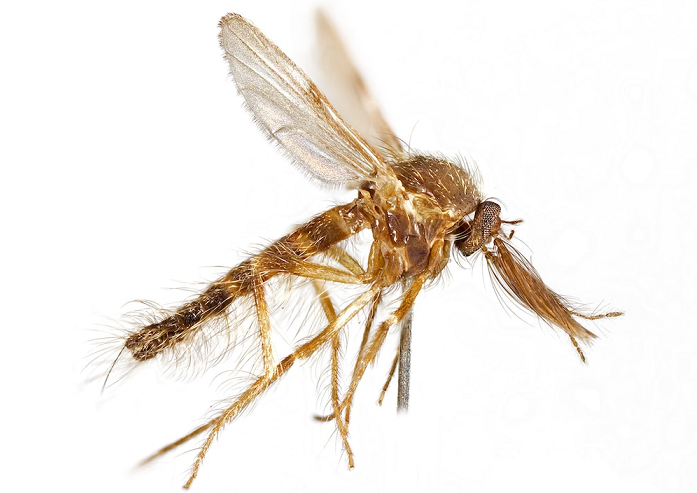
The cocoa pollinator, midge
COCOBOD on June 10, 2017, launched the Hand Pollination Piloting programme at Mankranso in the Ahafo Ano South District of the Ashanti Region as part of government's efforts to increase cocoa yields.
The Chief Executive Officer (CEO) of COCOBOD, Mr. Joseph Boahen Aidoo at the launch, for instance, said the hand pollination programme would “compensate for the fall in price” as the programme would increase the farmers’ production.
COCOBOD
In an interview with Graphic Online, the Executive Director of Cocoa Health and Extension Division of COCOBOD, Mr. Emmanuel Opoku said pollination forms part of the productivity enhancing initiatives that the agency had initiated to boost the sector.
“Pollination is the way to go because when it is properly done, it could lead to twice the volume of the beans they currently produce,” he said, explaining that “there is only one insect we know to do the (natural) pollination” on cocoa plants called midges.
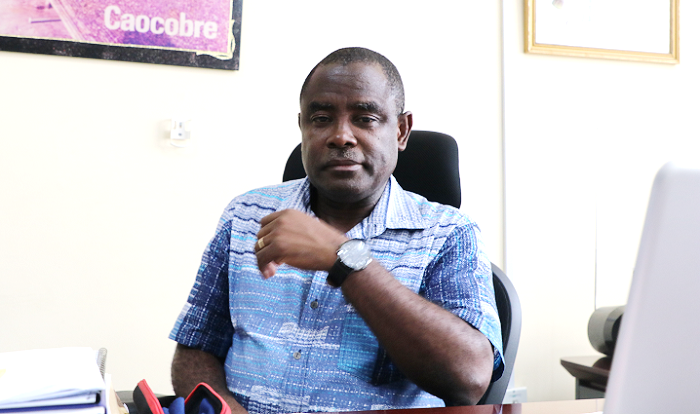
The Executive Director of Cocoa Health and Extension Division of COCOBOD, Mr. Emmanuel Opoku
The midges, Mr. Opoku said, bred in the left over cocoa pods in the farm and because many of the farmers use unapproved chemicals to spray their farms, they end up killing the midges, thus reducing their population.
“Recently, we noticed that a lot of the farmers are using unapproved chemicals not recommended by COCOBOD,” he said, adding that because many of the farmers want to kill insects that come to their farms, they end up undermining their own efforts.
Mr. Opoku explained that before COCOBOD recommends any chemicals for the farmers, they conduct a lot of tests on the said chemical to determine their toxicity on other beneficiary insects, including the midges, to make sure that the midges are not killed.
He expressed worry that farmers could not even get 10 bags of cocoa beans on average from one hectare of cocoa farm but when the same size of farm is well pollinated, the owner could get about one tonne, which is about 36 bags.
Tanyi Kwa village
On July 26, this year, I visited Tanyi Kwa village in the Asikuma-Odoben-Brakwa District of the Central Region. It was on a Thursday and since Thursdays are forbidden to go to the farm, many of the cocoa farmers were home.
As is typical of cocoa growing areas, the village was serene, with cocoa drying sheds scattered all over the place. The men, women and their children were engaged in different activities at the time of my visit.
Asikuma-Odoben-Brakwa is a known cocoa growing area in the Central Region. Many of the farmers apart from cultivating vegetables and cereals, also cultivate oil palm and cocoa, the other major cash crops in the area. Both men and women as well as children own cocoa farms of varying acreages.
Farmers’ Insight
In an interview, Ama Andam, 49, a farmer with over 20 years experience in cocoa farming, acknowledged that her cocoa yields had reduced significantly over the years in spite of the several efforts she had put into her farming.
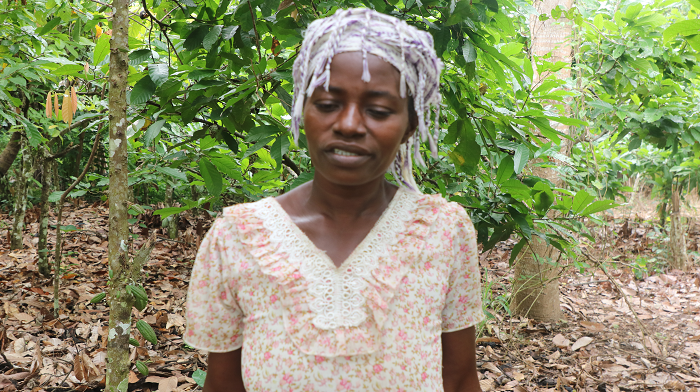
Ama Andam, a cocoa farmer
She readily admitted ignorance of pollinators and their contribution to her cocoa yields, explaining that what she knows to contribute to the cocoa yields was to weed her farm, prune the cocoa plants and spray it with pesticides.
I don’t know any insect that helps the cocoa plants to bear fruits. We have not been taught by the agricultural extension officers before, she said, shrugging her innocence nonchalantly.
For Kwesi Edward, 50, also a cocoa farmer with over 22-years-experience, even though he was aware of the pollinators, he claimed to only spray his farm to kill the pests and not the pollinators.
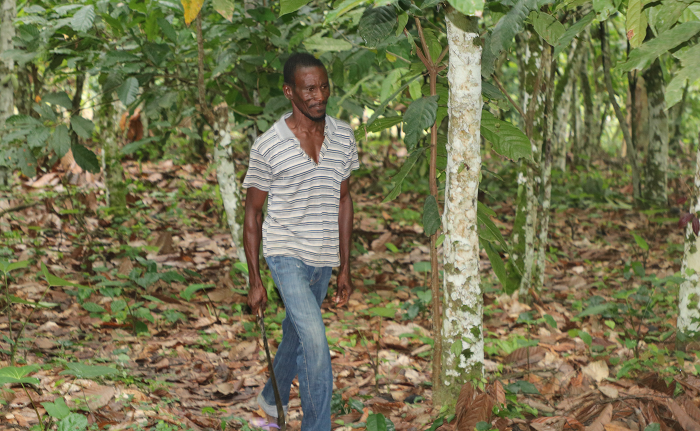
Kwesi Edward, a cocoa farmer
We have been told not to use chemicals without COCOBOD’s approval to spray our farms. So, I don’t use any chemical apart from the approved ones. You only risk decreasing your production if you choose to use unapproved chemicals.
Edward said he usually does the spraying in the morning because it is in the morning that he sees the pests on his farm.
The next village I visited was Kyireku, where I met Ama Ewudziwa, 50, who has over 20 years of experience in cocoa farming. The talk of pollinators intrigued her, and even though she was hearing of the ‘ntumoa’ for the first time, she was eager to see and protect them.
I don’t know any pollinator and cannot identify one if I see them. I really want to know them so that I don’t kill them.
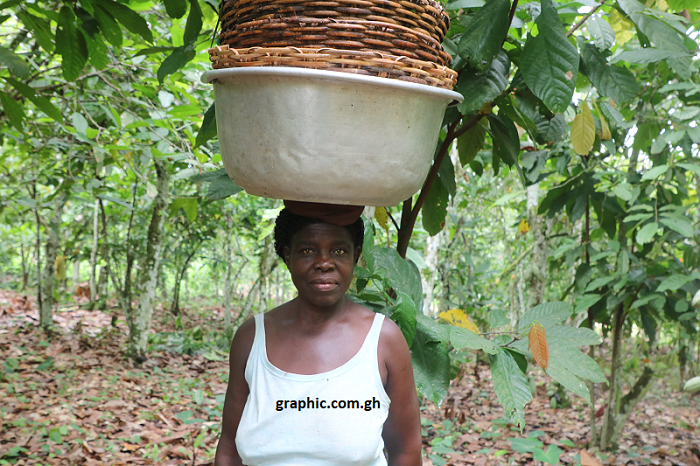
Ama Ewudziwa, a cocoa farmer
She expressed worry that in spite of the several acclaimed benefits associated with the pollinators, cocoa extension officers had not educated farmers in the area about it.
Similarly, Opanyin Kofi Asam, 72, who has spent more than half of his life farming cocoa, said the issue of pollinators and pollination was news to him.
These insects you call pollinators is news to me. I don’t know them and nobody has ever told me about it before.
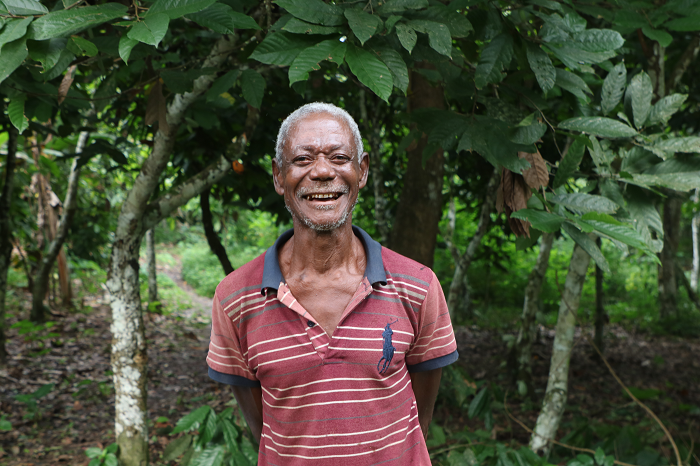
Opanyin Kofi Asam, a cocoa farmer
Isaac Okyere, 38, blamed the low cocoa yields on COCOBOD, accusing the sector regulator of failing to educate farmers about pollinators and pollination.
Research ranks pollination key
Contributing to the topic, the Head of the Department of Conservation Biology and Entomology (CBE) at the University of Cape Coast (UCC), Professor Peter Kofi Kwapong said “to be able to get maximum yield of cocoa, you need to encourage the existence of these midges within the cocoa agro-ecosystem.”
“If we do anything that seem to limit the existence of these pollinators, then we are in trouble.”
Prof Kwapong, himself a pollination expert, said spraying the cocoa farm was dangerous to the survival of the midges, explaining that the spraying can be done once in a year and it should be done in the evening since the pollinators come to the farm in the morning.
“They spray about three to five times in a year, killing many of these pollinators. In those days when we were not doing the mass cocoa spraying, Ghana was the leading producer of cocoa but now our cocoa is becoming less and less,” he said.
According to him “agriculture can only be successful if we consider the expertise of other scientists” and pointed out that “there is no agriculture without science.”
Prof Kwapong was unhappy with government’s decision to employ people to do hand pollination as a supplement to the natural pollination, saying the initiative is “expensive, time consuming and unsustainable.”
“We should not be paying for the things that animals are doing for us for free; instead, we should look at the welfare of these pollinators so that we will continue to have sustained help,” he said.

The Head of the Department of Conservation Biology and Entomology, UCC, Professor Peter Kofi Kwapong
He also criticised the calibre of people employed to do the mass cocoa spraying, saying many of them are not trained to do it properly.
Prof Kwapong however, admonished farmers not to remove the opened cocoa shells from their farms. They should also intercrop the cocoa with banana and plantains in order to increase the population of the pollinators on their farms.
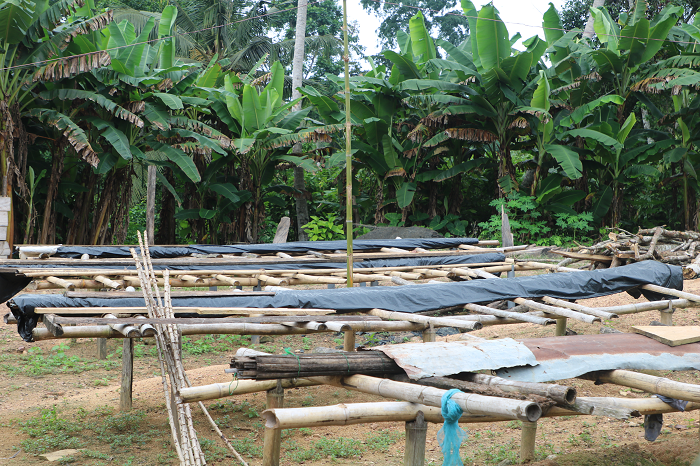
A cocoa-drying shed at Tanyi Kwa village
He said the midges survive in the empty shells of cocoa left on the farm or in rotten banana or plantain stems as well as rotten cocoyam leaves, explaining that the midges breeding mechanism is similar to that of mosquitoes.
Desired Action?
The sages counsel that better late than never. We as a nation can play catch up with the likes of Cote D’Ivoire, Malaysia, Indonesia and Ecuador in terms of yields per hectare. What we need is to start taking the right steps now. We cannot wait another decade to start talking of ‘leapfrogging’ for results. We must be systematic in our approach and everyone involved – government, researchers, extension officers, and not just farmers – must agree that pollination and pollinators is the way to go and we all must hit the road running. Tetteh Quarshie prevailed, and we must too.




